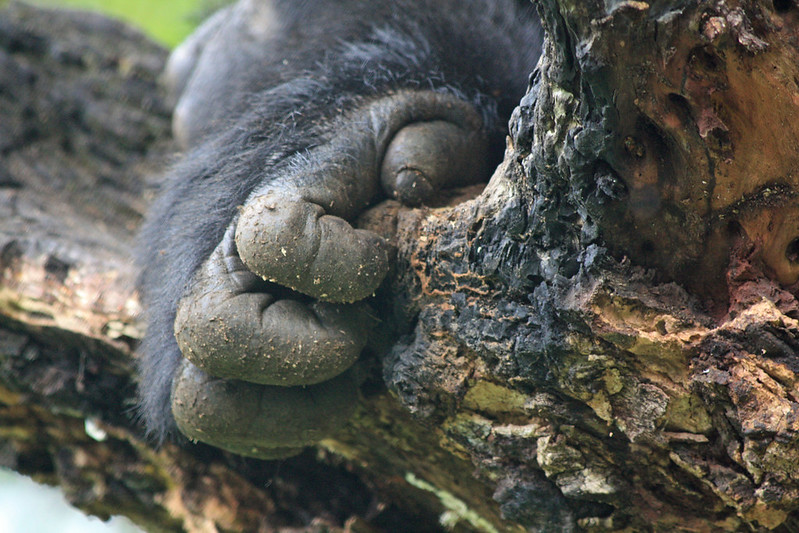
Difference between gorilla trekking and gorilla habituation
Gorilla Trekking vs. Gorilla Habituation. What is the Difference between gorilla trekking and gorilla habituation? Exploring Two Unique Encounters with Gentle Giants. In the verdant landscapes of East Africa, a meeting with the mountain gorillas stands as a pinnacle of wildlife encounters. Uganda and Rwanda, blessed with diverse ecosystems and rich biodiversity, offer two distinct yet equally captivating experiences: gorilla trekking and gorilla habituation. While both endeavors grant access to these enigmatic creatures, they differ in their approach, duration, and depth of interaction. In this exploration, we will delve into the differences between gorilla trekking and gorilla habituation, understanding the essence of each, the methods employed, the destinations that host them, and the impact they leave on both gorillas and those fortunate enough to engage in these encounters.

Gorilla Trekking: A Glimpse into Gorilla Lives
1. Overview of Gorilla Trekking
Gorilla trekking is a profound opportunity to venture into the natural habitats of mountain gorillas, observing their behaviors, social interactions, and daily routines. It’s a journey of awe and connection that bridges the gap between humans and these noble giants.
2. Approach and Encounter
Gorilla trekking involves joining a group of fellow adventurers, led by experienced guides and trackers. The trek leads you through lush rainforests, across undulating terrains, and into the gorillas’ domain. The objective is to locate a habituated gorilla family and spend a designated time in their presence.
3. Duration and Interaction
The encounter during gorilla trekking lasts around an hour, during which you have the privilege of observing gorillas at a respectful distance. This duration ensures minimal disturbance to the gorillas and aligns with conservation principles.
4. Destinations
Both Uganda and Rwanda offer gorilla trekking experiences. Uganda’s Bwindi Impenetrable Forest National Park and Mgahinga Gorilla National Park, as well as Rwanda’s Volcanoes National Park, provide travelers with opportunities to partake in this awe-inspiring endeavor.
5. Significance and Impact
Gorilla trekking supports conservation efforts by generating revenue that contributes to the protection of gorilla habitats and the well-being of local communities. It fosters a sense of appreciation for the interconnectedness of all life forms and sparks a passion for conservation among travelers.
Gorilla Habituation: A Deeper Dive into Gorilla Society
1. Overview of Gorilla Habituation
Gorilla habituation is a process that entails gradually acclimating gorilla families to human presence, allowing for extended and more intimate interactions. It’s an endeavor rooted in patience, respect, and a commitment to better understanding gorilla behavior.
2. Approach and Encounter
Gorilla habituation experiences involve joining researchers and trackers in their efforts to habituate a specific gorilla family. Participants play an active role in creating an environment where gorillas feel comfortable around humans.
3. Duration and Interaction
Unlike traditional gorilla trekking, the habituation process allows for a more prolonged interaction with gorillas. The duration can vary, but participants often spend several hours in the company of gorilla families, observing their behaviors, interactions, and daily lives.
4. Destinations
Uganda’s Bwindi Impenetrable Forest National Park and Rwanda’s Volcanoes National Park offer gorilla habituation experiences. These destinations provide participants with the unique opportunity to actively contribute to conservation while forging a deeper connection with gorillas.
5. Significance and Impact
Gorilla habituation not only benefits researchers in terms of insights into gorilla behavior and ecology but also minimizes stress for the gorillas during future human encounters. The revenue generated from habituation experiences contributes to conservation initiatives and empowers local communities.
Choosing Between Gorilla Trekking and Gorilla Habituation
1. Duration and Depth of Interaction
Gorilla trekking is ideal for those seeking a brief yet impactful encounter with gorillas, providing a snapshot of their lives in the wild. On the other hand, gorilla habituation offers a more immersive experience for those who wish to delve deeper into gorilla society and behavior.
2. Interest in Conservation Involvement
Travelers with a keen interest in conservation and a desire to actively contribute to habituation efforts may find gorilla habituation more fulfilling. This experience allows participants to play a direct role in gorilla research and protection.
3. Personal Preferences
The choice between gorilla trekking and gorilla habituation ultimately comes down to personal preferences. Those seeking a blend of adventure, connection, and conservation impact may find both experiences rewarding, while others may opt for one over the other based on their priorities.
4. Availability and Scheduling
It’s important to note that gorilla habituation experiences may have limited availability and specific scheduling requirements. Planning in advance and checking with tour operators can help ensure a seamless and well-timed participation.
3-Days Rwanda Gorilla Trekking Safari
3-day gorilla trekking safari in Bwindi
4 Day Gorilla Trekking in Rwanda
3 Day Gorilla trekking safari in Rwanda
3-day Gorilla habituation tour
In Conclusion: A Tale of Two Encounters
Gorilla trekking and gorilla habituation are two paths that converge at the heart of conservation and connection. Each experience offers a unique perspective into the lives of gorillas, presenting travelers with the opportunity to stand witness to their majesty, resilience, and intricate social structures. Whether you choose the intimate immersion of gorilla habituation or the awe-inspiring observation of gorilla trekking, the common thread is the reverence and respect for these magnificent creatures that share our planet. Whichever path you embark upon, the encounters will linger in your memories, fostering a deep appreciation for the delicate balance of nature and humanity’s role in safeguarding it.
